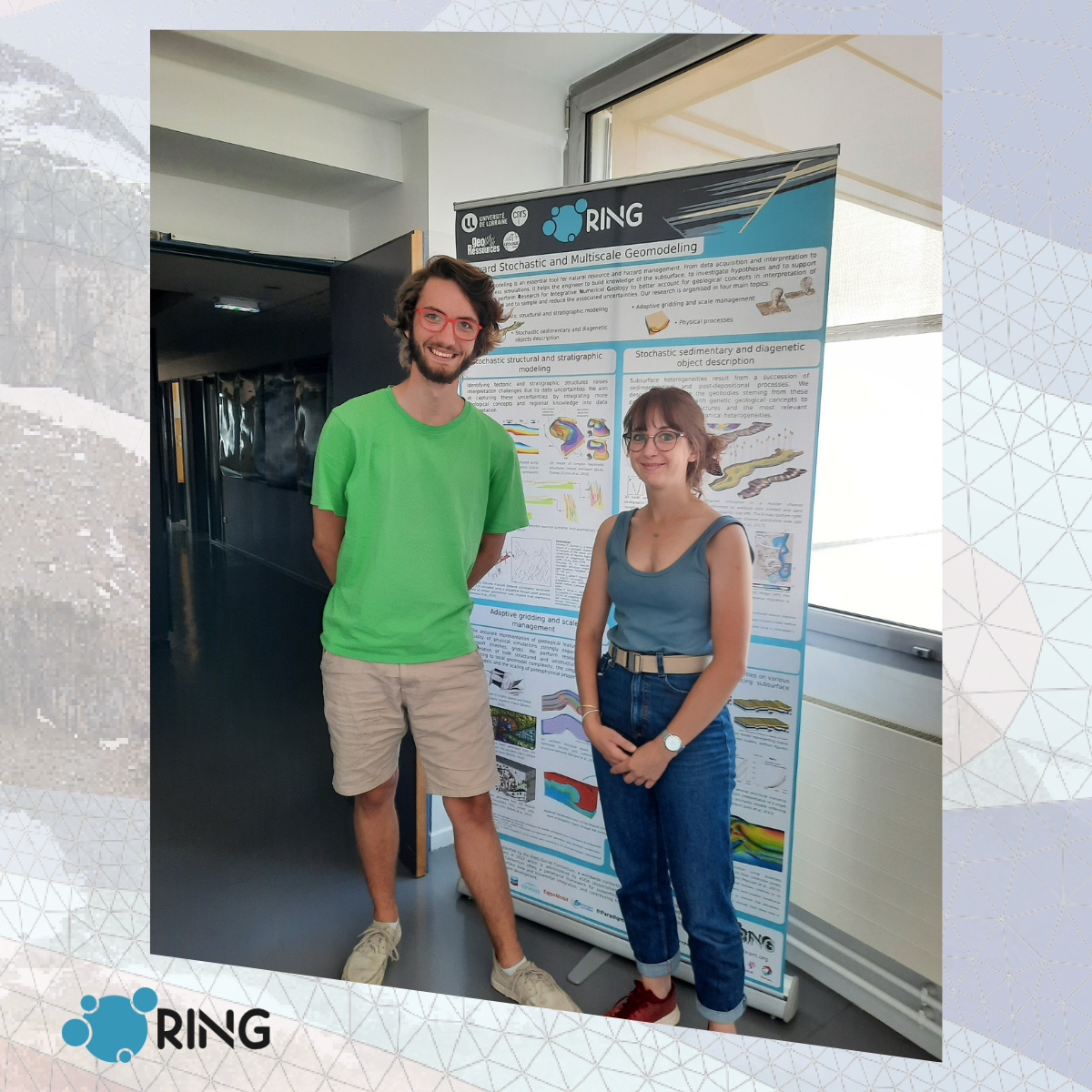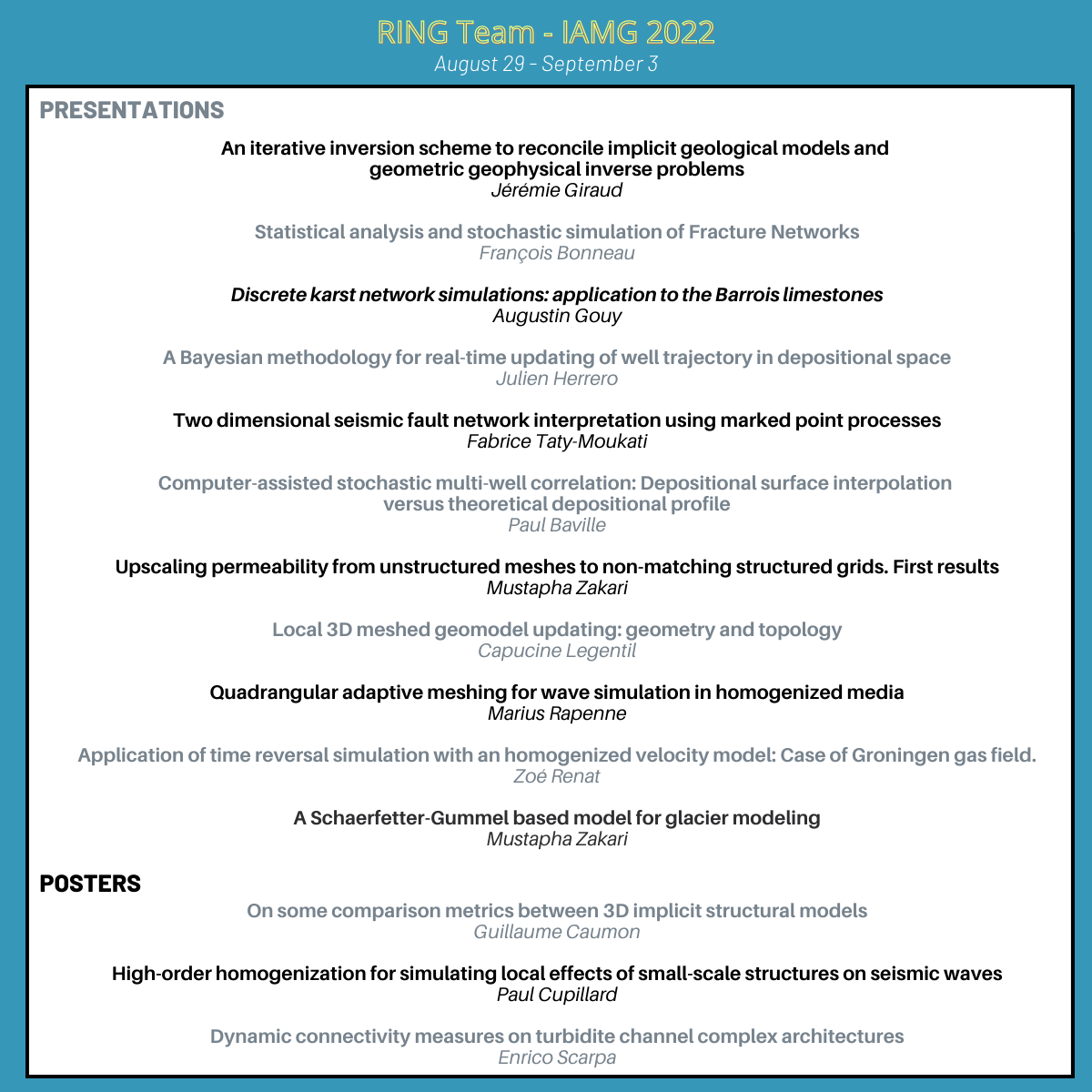Welcome to Louise HOUBRE et Romain BAVILLE, first year students at ENSG, our interns for this Summer!
- Details
- Category: News
Click on the image to access the Conference website and detailed schedule
- Details
- Category: News

Photo credits (RING Team): P. Marchal, J. Herrero, A. Gouy, J. Giraud, E. Scarpa
- Details
- Category: News
We are delighted to announce that Paul Baville obtained his PhD on Tuesday, April 12 after defending his thesis entitled :
Stratigraphic correlation uncertainty - On the impact of the sediment transport direction in computer-assisted multi-well correlation.
Video of the defense available here

- Details
- Category: News





